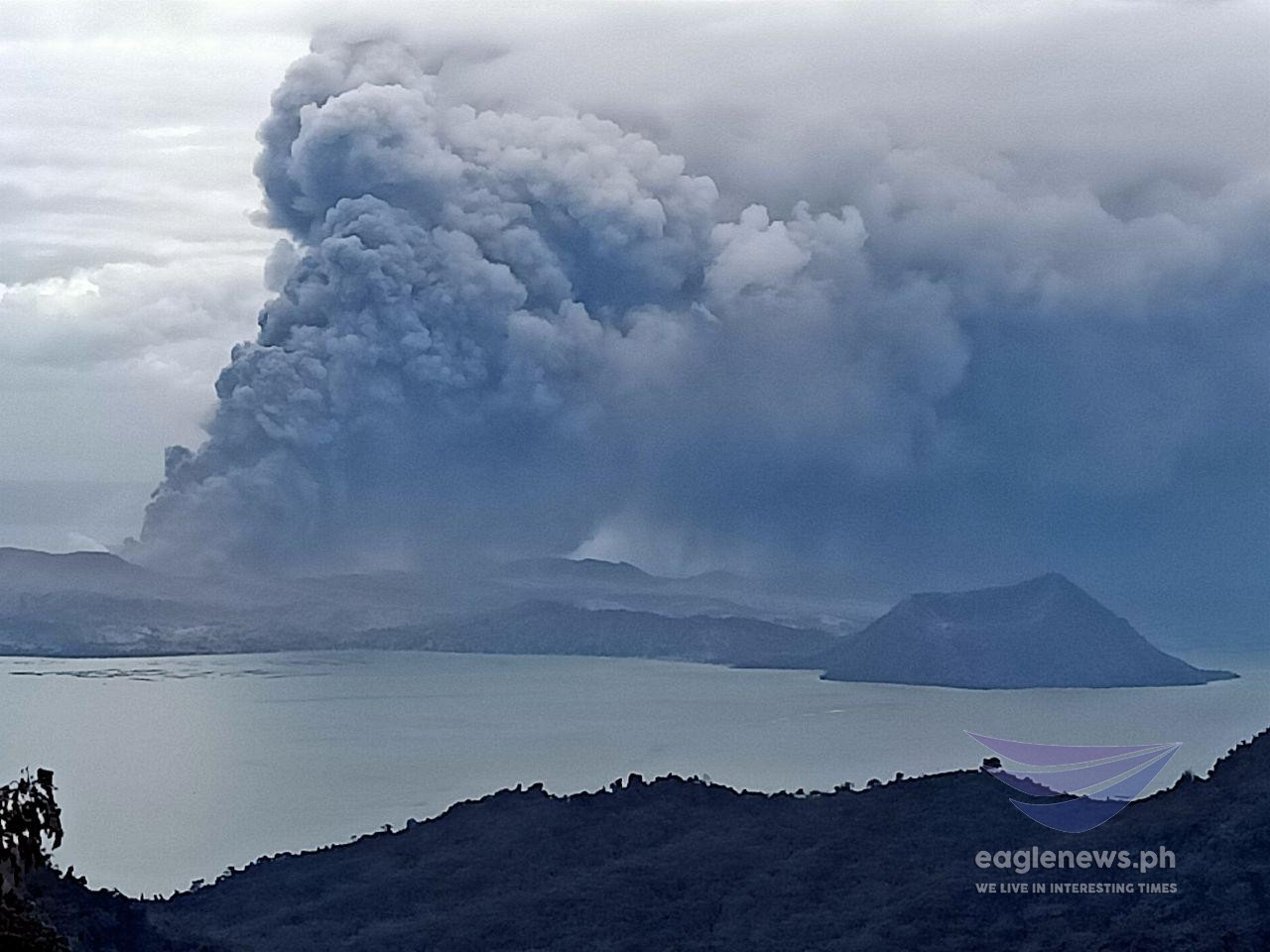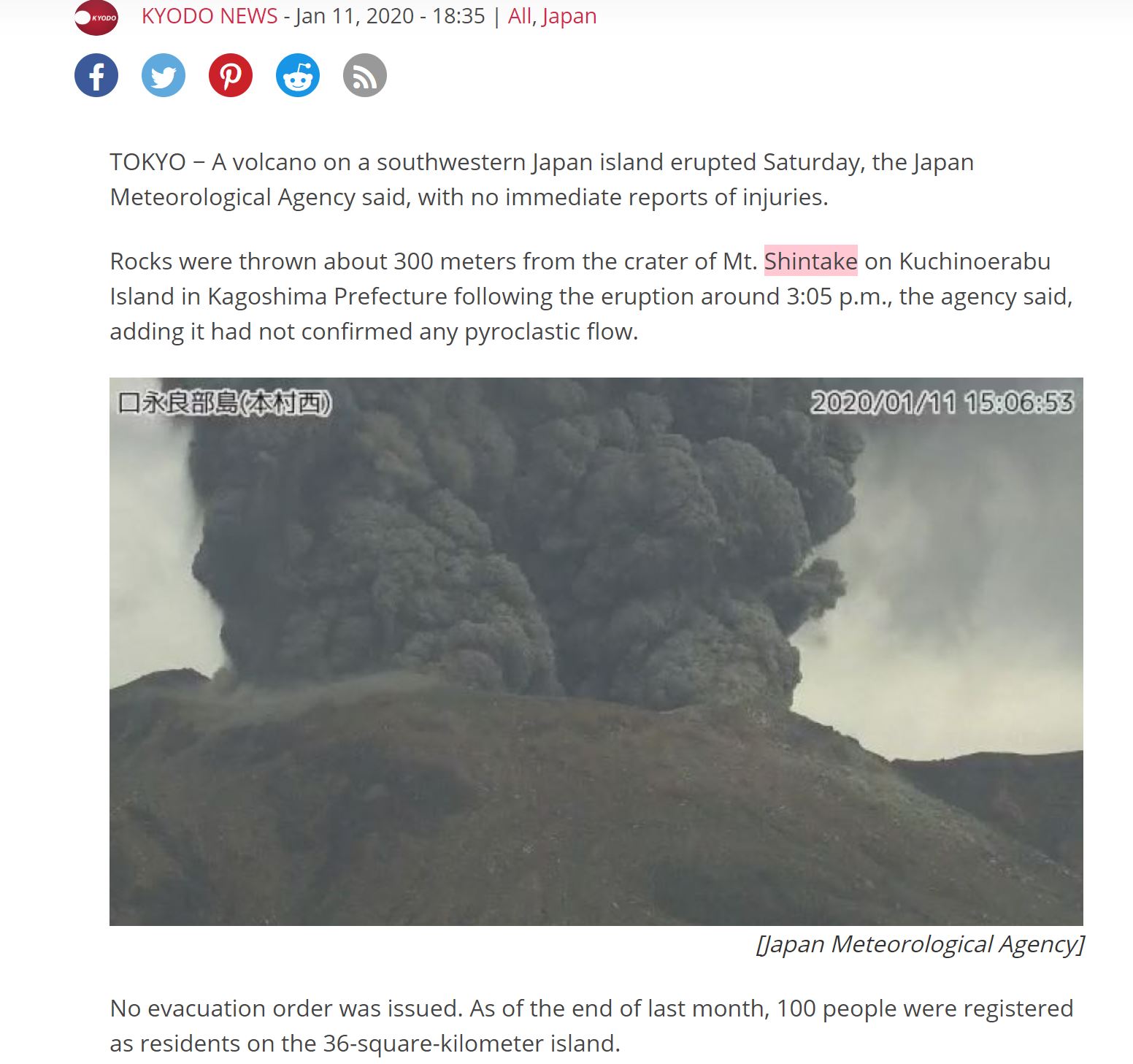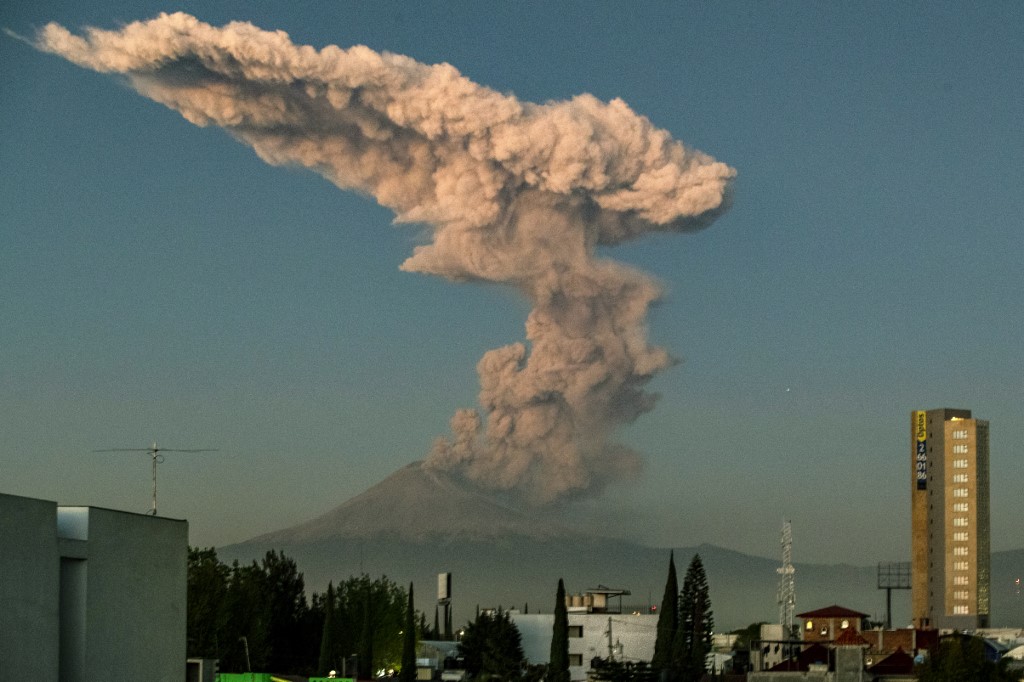
Before Taal volcano in the Philippines erupted with steam and huge columns of ash on Sunday, Jan. 12, Japan’s Mount Shintake had also erupted on Saturday, Jan. 11, while Mexico’s Popocatepetl volcano had also dramatically spewed a fiery cloud of ash and rock into the sky on Thursday, Jan. 9.
In a span of four days, these three volcanoes spewed ash and steam, although there was no evacuation order issued in Japan and Mexico due to the eruption.
-Rocks thrown 300 meters from crater of Japan’s Mt. Shintake-
According to Kyodo News, citing the Japan Meteorological Agency, “rocks were thrown about 300 meters from the crater of Mt. Shintake on Kuchinoerabu Island in Kagoshima Prefecture following the eruption around 3:05 p.m., on Saturday, Jan. 11.
But the agency did not confirm any pyroclastic flow.
It said that this was the first eruption on the island since Feb. 2 last year.

The JMA said that the it had maintained the alert level for the volcano at 3 on a scale of 5.
It warned of possible flying rocks and pyroclastic flows within about a 2-kilometer radius of the crater.
The agency warned of possible flying rocks and pyroclastic flows within about a 2-kilometer radius of the crater.
-Mexico volcano belches fiery cloud-
Two days before this Japan volcano’s activity, Mexico’s Popocatepetl volcano spewed “a moderate amount of ash and incandescent material” from its crater, according to a tweet of the National Disaster Prevention Center.
“Popo,” as the volcano is known, exploded early in the morning of Thursday, Jan. 9, although this did not prompt authorities to raise their eruption alert level.

The explosion created a cloud of ash that reached 3,000 meters (1.9 miles) into the air.
The authorities, however, left the volcano’s alert level at “Yellow Phase Two,” which instructs people to remain at least 12 kilometers (7.5 miles) from the crater and be prepared for a possible evacuation.
Popocatepetl, which means “smoking mountain” in the indigenous Nahuatl language, has not had a massive eruption in more than a millennium, but has shown increased activity in the past 26 years.
It is considered one of the world’s most dangerous volcanoes, because some 25 million people live within a 100-kilometer (60-mile) radius.
(with reports from Kyodo News and Agence France-Presse)







